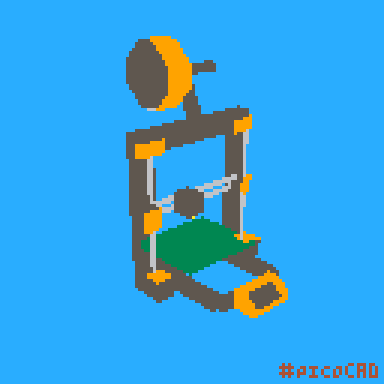About this Blog
This blog documents my increasingly complex projects combining electronics, microcontrollers, software and lots of too much hot glue.

My main interest over the last few years has been 3D printing but I am now at a point where I mainly use it for other projects in a supporting role instead of mainly just improving and upgrading my printer.
One of these days I will start a new big 3d printing project (maybe a voron or getting into SLA).
If I have any project that is worth documenting for one reason or another I will post it into the Projects or one of the other categories. The junkdrawer has a few things that didn’t quite work out as I had planned. Some of them could now be trivial to do with better knowledge and more resources.
Desktop in May 2000 Desktop as of the end of December 2000 Desktop in mid-2001 LiteStep Setup at beginning of 2003 Testing PearPC in June of 2004 Desktop in September of 2004
Around 2012 I wanted to see if I could pull off making my own electrical power in some shape. Since I could not see any use aside from my personal edification I wasn’t willing to spend a lot of money on it but also wasn’t that worried about the results.
The basic plan was to get cheap solar panels from somebody re-powering their setup and making my own MPPT tracker. The power would be stored in some cheap lead acid car batteries I managed to get from a recycler.
After experimenting with solar power over the last decade it became obvious that for some applications if you can get the power draw low enough battery power is enough to run that application for potential years. A information display would need some kind of connectivity and I had looked into running an ESP32 with low power a couple of years earlier.
That time I ran into the issue that the LDO I used and that were included in most dev boards ate up about 1mA constantly and that limited the possible runtime for my projects to days on battery power alone.
While the firefly jars were nice they lacked the utility of a simple solar light. The way I had to use epoxy to fix the panels inside the jar was also a bit of an annoyance. A light would also need some diffusion to work well. I decided to trade a some of longevity for convenience and lower BOM and start using simple glass jars with metal screw tops. The glass should be milky and thus scatter the light of a few warm white LED to give the light a nice glow.
Over the few months that I had the printer I changed it quite a bit.
3D Printer Aug 2016 Its a running gag that most of the things you print on a 3d printer are 3d printer parts. This turns out to be all too true since 3d printer parts are both useful(for 3d printing) and give you a sense of having accomplished something right away (since that part is useful right away).
I have been a fan of the Amazon Kindle e-readers ever since I first was able to get my hands on a Kindle 3 Keyboard. I had been pining for a way to read electronic books on something other than a computer screen for a long time.
Of course what I find most interesting about the Kindle e-readers is how easy they are to root - relatively speaking of course. Some fine soldering is required.
Around 2010 I started to experiment with solar power. Since outside isn’t the best of environments for electronics I came upon the idea to do a solar firefly glass. A glass made for canning food would be completely moisture resistant and stable.
Along the way I learned a lot about how to harvest energy from the environment and most importantly that hot-glue will melt inside a glass yar in summer.
I spend much of the late 90ies and the first half of the 2000s making modules for LiteStep. I am keeping the source code and binaries for these old projects here. All modules were made in Delphi 2.0 and doing low-level win32 system programming with it was sort of my thing.
All of these are truly obsolete by now and should have newer better made replacements.
These are the LiteStep Modules I made: